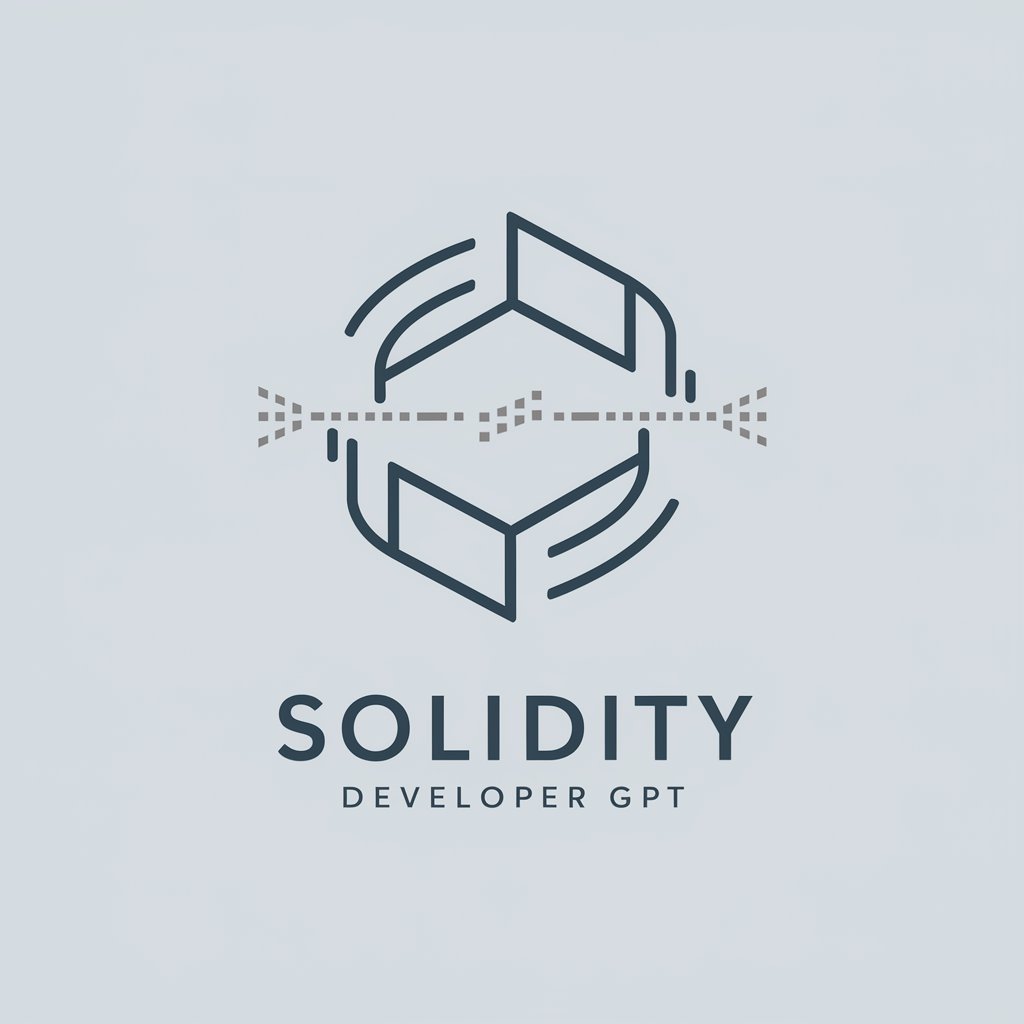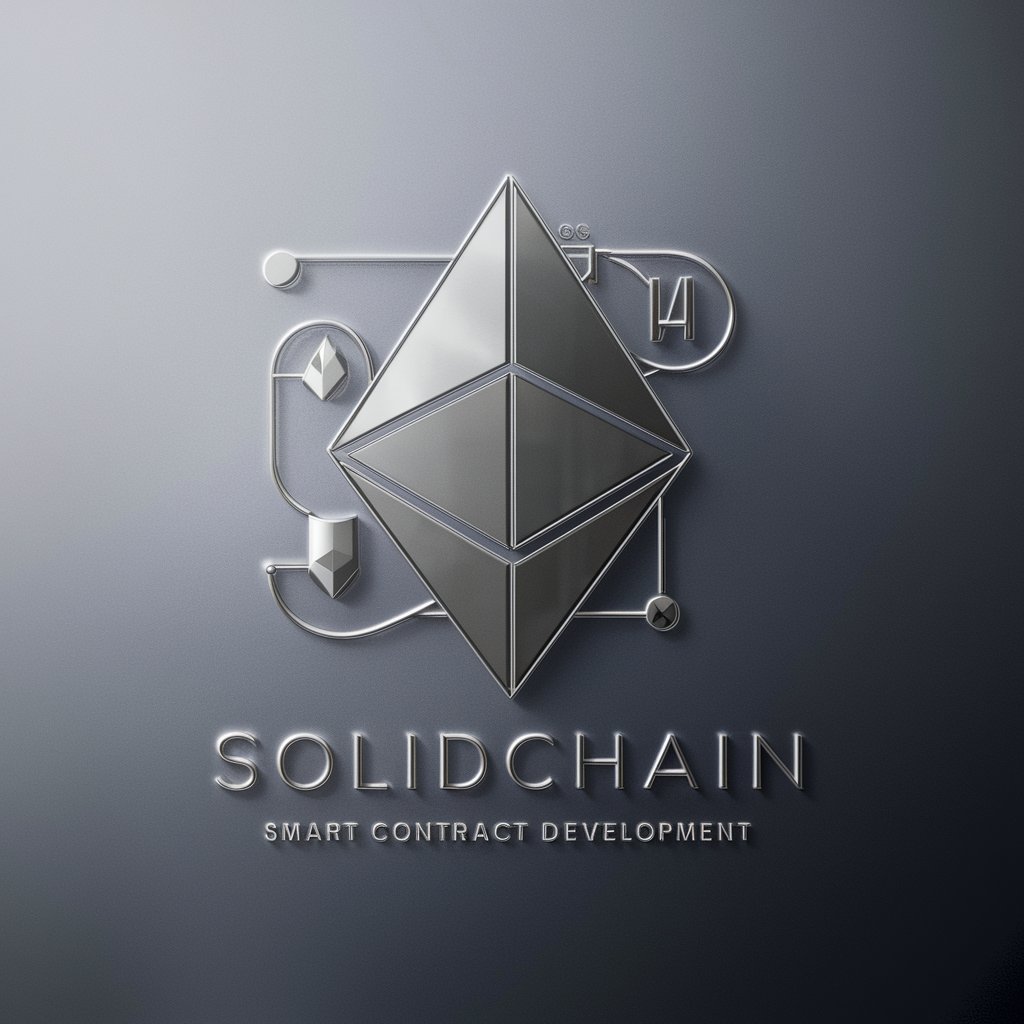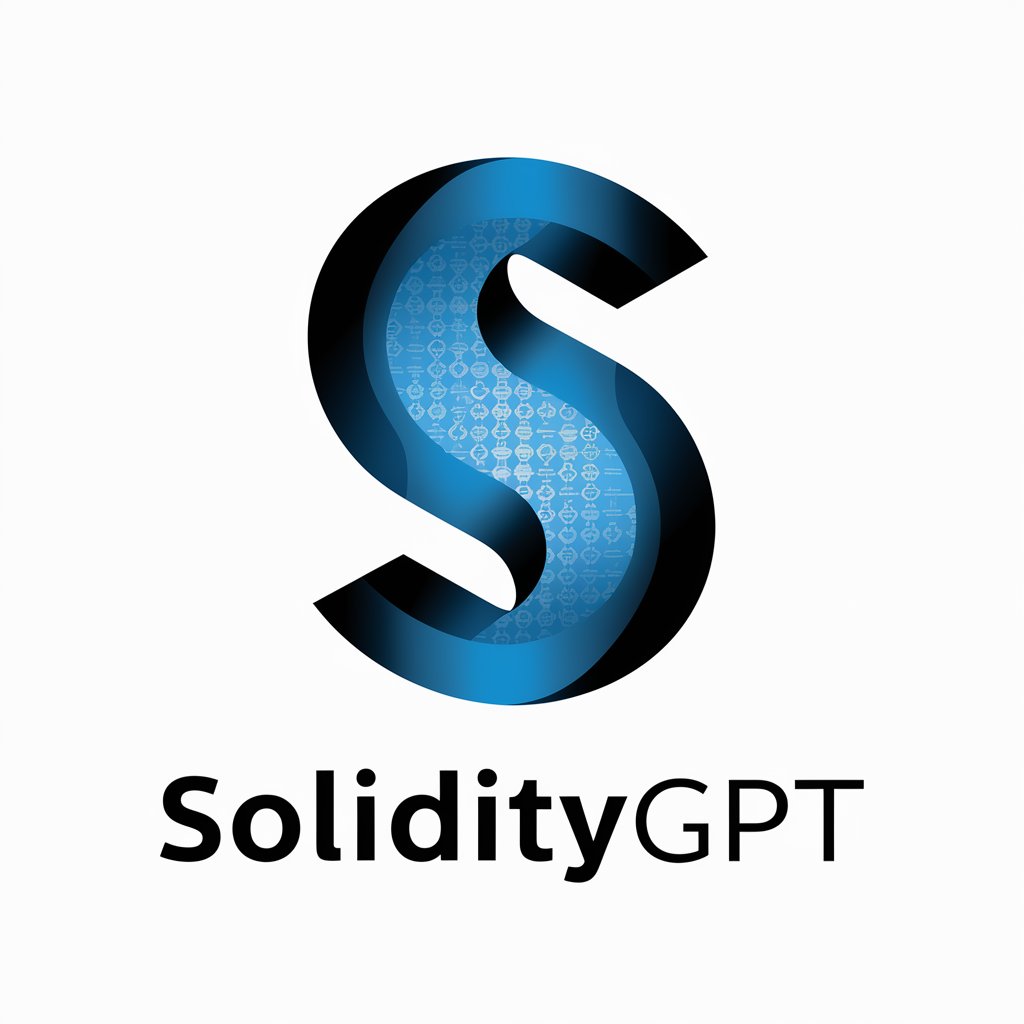
Solidity - AI-powered Solidity development tool

🟣 Advanced Solidity assistant and code generator with a focus on responsive, efficient, and scalable code. Write any smart contract and become a much faster developer.
AI-powered smart contract development.
✏️ Write a smart contract for decentralized voting
💰 Create a token swap feature with liquidity pools
🪲 Find any bug or improvement in my smart contract
💡 Teach me a useful skill or trick in Solidity
Get Embed Code
Detailed Introduction to Solidity
Solidity is a statically typed, high-level programming language designed specifically for implementing smart contracts on blockchain platforms, primarily Ethereum. It is heavily influenced by JavaScript, Python, and C++, making it familiar for developers from these backgrounds. Smart contracts written in Solidity control the behavior of accounts within the Ethereum blockchain, automating and enforcing agreements without the need for intermediaries. Solidity’s main design purpose is to enable the creation of decentralized applications (DApps) and programmable contracts that are executed in a secure and transparent manner on a decentralized network. The language provides features for inheritance, libraries, user-defined data types, and complex data structures, making it versatile for a wide range of decentralized applications. A typical example is writing a contract that handles payments in a trustless environment. For instance, a crowdfunding platform can be developed using Solidity to ensure that funds are only released if certain conditions are met (e.g., reaching a funding goal). This ensures transparency and security for all participants. Powered by ChatGPT-4o。

Core Functions and Features in Solidity
Contract Definition
Example
Solidity allows you to define contracts using the `contract` keyword. Inside a contract, you can define state variables, functions, and events that make up the logic of the smart contract.
Scenario
Consider a voting system where users cast votes for different candidates. A contract can be created to store candidate details, count votes, and manage user permissions. This ensures that voting is transparent and immutable.
State Variables
Example
State variables in Solidity hold data that is stored on the blockchain and persist across function calls. These are declared at the contract level and are central to the contract’s functionality.
Scenario
In a token contract, state variables such as `balances` keep track of the token holdings of each user. These values are updated during transfers and can be queried at any time, reflecting the current distribution of tokens.
Functions
Example
Functions in Solidity define behavior and are used to execute specific tasks. They can be public, private, or restricted in accessibility, ensuring proper control over the contract’s functionality.
Scenario
In a decentralized auction contract, functions can be written to allow users to place bids, withdraw their funds if they are outbid, and for the auction owner to finalize the auction, transferring ownership of the item to the highest bidder.
Modifiers
Example
Modifiers are used to change the behavior of functions in a declarative way. For instance, the `onlyOwner` modifier restricts the execution of a function to the owner of the contract.
Scenario
In a token contract, you may want to restrict the minting of new tokens to the contract creator. Using a modifier like `onlyOwner`, the mint function will ensure that no one else can create new tokens.
Events
Example
Events in Solidity allow contracts to emit logs to the Ethereum blockchain that can be listened to by external systems. These logs can be useful for debugging and provide a reliable record of specific actions.
Scenario
In a marketplace contract, an event such as `ItemSold` can be emitted whenever a sale is made. This allows external services or interfaces to listen for this event and update their UI or database accordingly.
Payable Functions
Example
Solidity’s `payable` functions enable the contract to receive Ether from users. This is critical for contracts that handle funds, such as escrow services or ICOs.
Scenario
In a crowdfunding contract, the function that allows users to contribute Ether towards a project must be marked `payable` to accept and process payments. It will record the contributions and update the funding status.
Inheritance
Example
Solidity supports inheritance, allowing contracts to derive properties and methods from parent contracts. This enables code reuse and modular development.
Scenario
If you're developing a token, you can inherit the standard ERC-20 functionality from a base contract. This avoids rewriting token transfer logic and ensures compliance with established standards, while also allowing you to add custom features.
Mappings
Example
Mappings in Solidity are key-value data structures that associate unique keys with specific values. They are commonly used for storing balances, permissions, or other record-like data.
Scenario
In an identity management system, a mapping can associate Ethereum addresses with identity details, allowing efficient lookup and validation of users on the blockchain.
Target Users of Solidity
Blockchain Developers
These are developers who are building decentralized applications (DApps) or smart contracts for blockchain platforms like Ethereum. Solidity provides them with the tools to write, test, and deploy secure, immutable smart contracts, enabling them to create financial services, gaming applications, and governance systems, among others.
Entrepreneurs and Startups
Individuals or organizations looking to leverage blockchain technology for innovative business models. Solidity is ideal for startups seeking to launch token sales, crowdfunding platforms, or create decentralized finance (DeFi) solutions. It provides the core framework for creating transparent, decentralized services that are trustless and secure.
Financial Institutions and DeFi Developers
Solidity is critical for building decentralized finance (DeFi) applications, such as lending platforms, decentralized exchanges, and stablecoins. Financial institutions looking to enter the DeFi space can use Solidity to create smart contracts that automate and enforce lending, borrowing, and trading mechanisms, cutting out intermediaries and reducing costs.
Gaming Industry
Developers in the gaming industry are increasingly utilizing Solidity to create blockchain-based games where in-game assets, currencies, and items can be tokenized. Players have full ownership of their digital items, which can be traded or sold outside the game’s ecosystem, creating a player-driven economy.
Governments and NGOs
Governments and NGOs looking to create transparent systems for governance, voting, and public funding can benefit from Solidity. Smart contracts provide immutable records and eliminate the risk of tampering, ensuring that systems are fair and trustworthy.

Detailed Guidelines for Using Solidity
1
Visit yeschat.ai for a free trial without login, also no need for ChatGPT Plus.
2
Set up your development environment by installing Remix IDE, a browser-based IDE for writing, compiling, and deploying smart contracts in Solidity. You can also use frameworks like Hardhat or Truffle for more advanced use cases.
3
Learn Solidity syntax and core concepts such as smart contracts, functions, events, and modifiers. Solidity follows a structure similar to object-oriented programming, so understanding the basic building blocks is essential.
4
Write and deploy smart contracts. You can create contracts that manage digital assets, execute decentralized applications (DApps), or automate tasks on the Ethereum blockchain.
5
Test and debug your contracts. Use Remix's built-in debugging tools, or frameworks like Hardhat for running tests to ensure your smart contracts behave as expected before deployment on a live network.
Try other advanced and practical GPTs
Video Idea Generator
AI-powered tool for viral video ideas

Home Assistant
AI-powered automation for smarter homes

Coupert
AI-powered savings for online shoppers

Lecture Study Notes
AI-powered notes for deep understanding.

爆款标题 | 标题 | 名称 | 主题 | 百家号 | 公众号 | 头条
AI-powered catchy headlines for any platform

ㆍArduino Expertㆍ
AI-powered expert assistance for Arduino projects

Marketing RRSS - Magenta Consultores
AI-powered marketing for small businesses

レスバ最強おじさんRONPAさん
AI-powered debate warrior simulation

LetzAI
AI-powered image creation made simple
Nuxt
AI-Powered Web Development Simplified

最全数学建模赛题助手
AI-powered solutions for mathematical modeling competitions

数据分析大师 - 可生成中文图表
AI-powered charts with Chinese text support

Solidity: Detailed Q&A
What is Solidity used for?
Solidity is a high-level programming language specifically designed for writing smart contracts on Ethereum and other blockchain platforms. It's used to create decentralized applications (DApps), manage digital assets, and automate tasks through self-executing contracts.
What are the main features of Solidity?
Key features of Solidity include inheritance, libraries, complex user-defined data types, modifiers, and events. It supports creating complex decentralized applications with flexibility in logic and execution, while ensuring transparency and security.
What development environment should I use for Solidity?
Remix IDE is the most beginner-friendly tool for developing Solidity contracts. For more advanced developers, Hardhat and Truffle offer additional features like unit testing, debugging, and plugin support to streamline the development process.
How do I deploy a Solidity contract on Ethereum?
You can deploy a Solidity smart contract using Remix or other frameworks like Hardhat. After writing and compiling your contract, you’ll connect to an Ethereum network via a wallet (e.g., MetaMask) and use Ether to pay for the gas fees associated with the deployment.
What are common use cases for Solidity?
Solidity is widely used for creating token standards (like ERC-20), decentralized finance (DeFi) applications, non-fungible tokens (NFTs), decentralized autonomous organizations (DAOs), and other blockchain-based systems that require decentralized, transparent logic.





